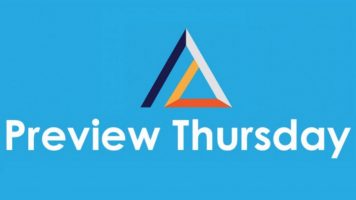Preview Thursday: Help Them Grow, or Watch Them Go

Best of Books
September 28, 2017
Julie Winkle-Giulioni
Topics
Character-based Leadership, Leadership, Leadership DevelopmentThe following post is a preview excerpt from Chapter 3 of Help Them Grow, or Watch Them Go by Julie Winkle-Giulioni in celebration of the book's five year anniversary!
Your employees’ ability to take satisfying and productive steps toward career goals is directly proportionate to their self-awareness.
Looking Back to Move Forward
You can enable career-advancing self-awareness by helping employees take stock of where they’ve been, what they’ve done, and who they are. Looking backward thoughtfully is what hindsight conversations are all about. They surface what people need to know and understand about themselves to approach future career steps in a productive and satisfying way.
For hindsight to be as clear as possible, though, two different perspectives are required. The employee’s self-perception is the starting point. (That’s what this chapter is all about.) But it needs to be confirmed, challenged, enhanced, and otherwise worked over with information gathered from others. When employees, co-workers, and you the manager also look backward at performance and results, hindsight gets that much closer to 20/20. (Just wait until the next chapter for more about feedback.)
Hindsight allows employees to develop a clear view of their:
- Skills and strengths - what they’re good at;
- Values - what’s most important;
- Interests - what keeps them engaged;
- Dislikes - what they want to steer clear of;
- Preferences - how they like to work; and
- Weaknesses - what they struggle with.
Clarity around these factors allows for intentional movement toward career objectives. Otherwise, people may engage in lots of activity that’s not focused or that takes them in directions that aren’t consistent with who they are and what they really want to do.
“I worked for years to get that senior troubleshooter promotion. Put everything into it. But when I got it, I was miserable. The travel took me away from my family for weeks on end and the work itself was really unsatisfying. I’d swoop in, do my part and then swoop out... never seeing the end product or really feeling a part of it. If I’d really thought about it, I would have known that it wasn’t a good fit. I’ve always been happiest being part of an ongoing team and having something tangible to show for my efforts at the end of the day.” - IT Consultant
Employees may get ‘there’ only to discover that it’s not really where they wanted to be.
Hindsight conversations are the foundation of career development. They are designed to spark thinking, encourage connections, and promote discovery. They provide invaluable information to the employee and to you, the manager. You can facilitate this type of self-awareness through quality questions that:
- Haunt the employee, popping out around every corner;
- Percolate throughout the day - and maybe at night; and
- Worm their way around their minds, finding new areas to explore.
(If you’re still waiting for the other shoe to drop and for us to tell you about the 10-20 hours of additional to-dos that are required to appropriately support your employees in their career development, let it go. It’s not going to happen. We’re serious. You can be highly effective by just guiding the conversation. You don’t have to have the answers and you don’t have to drive the action. Really!)
The Gravitational Pull of Weaknesses
Most people are disconnected from their strengths but strongly drawn toward their weaknesses. When you have a minute (literally 60 seconds), make a list of all of your strengths and weaknesses. Chances are you’ll have more weaknesses than strengths on your list.
In fact, in workshop after workshop, we witness a surprising human dynamic. When people are asked to create a list of their weaknesses, they do so effortlessly, smiling and sometimes laughing at the task. Ask these same people to list their strengths and you see a very different response. Furrowed brows. Head scratching. Grimaces and genuine agitation. Odd, huh?
What About You
You can even skip the writing and count up your strengths on one hand and weaknesses on the other. More smiles or frowns?
A strength is a lot like oxygen. We don’t really pay much attention to it... unless it’s missing.
***
If you would like to help Julie celebrate her book, please share this post, use one of these graphics, and tag Julie in the post!






